LGBTQ+ Representation for a General Audience
This week the fifth episode of Star Trek: Discover “Choose Your Pain” introduced a same sex couple – Stamets and Culber – which is being hailed as an amazing moment for LGBTQ+ representation.
I’ve been thinking about the portrayal of this same sex couple and why I am at once very pleased with it, but also wary about how I’m discussing them. I absolutely adore Culber and Stamets and I’m looking forward to seeing where those characters go, but a lot of the arguments I’ve been making regarding the positive LGBTQ+ representation in the series is uncomfortably close to arguments that have been used against me when I have pushed for more rep in the past. It’s an odd place in which to find myself.
In last week’s episode review I stated the following:
A lot of time people complain about same sex pairings being forced into the plot or being gratuitous. Their introduction was simply them having a conversation as they prepared to go to sleep. Haters will be hard pressed to take an issue with that type of introduction without admitting that their issue with it is simply the fact that it’s a same sex couple. I personally don’t feel like we need to tone down anything for a heterosexual audience, but doing it this way will expose what people’s issue with it really is.
In general, I still stand by what I said. Haters gonna hate. Let them spew their bigotry and show their true colors. But I’m even more conscious about the fact that the reason I praised it so much was because I’m so frustrated with the push back from heterosexual (and often homophobic) complaints about LGBTQ+ inclusion in the first place. The arguments used against other representation has clearly sunken into my subconscious and framed how I argue for representation. This was’t “in our face.” This was’t “gratuitous.” They weren’t “making out” and causing the heterosexual viewers to become “uncomfortable.” The list of phrases running through my head go on and it’s not the homophobic faceless social media commentators voices I’m hearing it in. It’s my own and I’m horribly saddened by that fact. They got to me. They really got to me.
On the other hand, it is nice to see something different. It’s nice to see domestic moments between two loving partners who have clearly been together for a long time. We’re not always Queer as Folk. Sometimes we’re Gay as Blazes (NSFW video in link). LGBTQ+ representation should be broad and encompass many diverse groups of people. We aren’t all the same. In fact, a lot of the time we can’t even agree on what good representation even is. But we definitely don’t need to feel we have to be toned down for a general audience. We don’t have to be domestic. We don’t have to be subtle or comfortable or even monogamous. But… we can be. It’s an option, not a requirement. Anyone who says that this is how we must be represented in media is simply wrong.
So yes, this is good LGBTQ+ representation, but not entirely for the reasons I first pointed out. As Brian Kinney so succinctly put it in season 2 episode 3 of Queer as Folk, “who gives a flying f*** what straight people think?” Brian Kinney, my highly problematic fav, had a good point.
Author: Angel Wilson
Angel is the admin of The Geekiary and a geek culture commentator. They earned a BA in Film & Digital Media from UC Santa Cruz. They have contributed to various podcasts and webcasts including An Englishman in San Diego, Free to Be Radio, and Genre TV for All. They identify as queer.
Help support independent journalism. Subscribe to our Patreon.
Copyright © The Geekiary
Do not copy our content in whole to other websites. If you are reading this anywhere besides TheGeekiary.com, it has been stolen.Read our

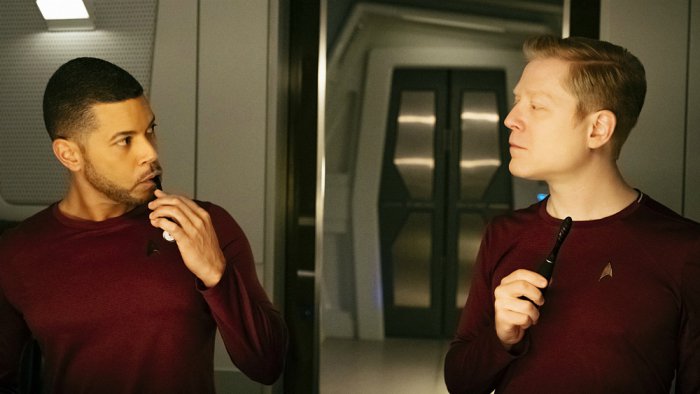
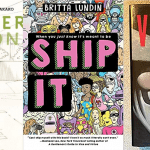
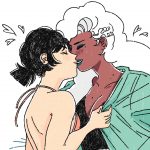

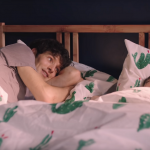
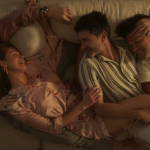
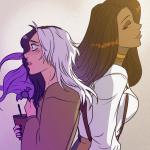
I think this is a wonderful commentary regarding representation. It’s hard to find a middle ground when it comes to satisfying LGBTQ representation in your show without forsaking your hetero (and yes often slightly at least homophobic) audience. I think sometimes though that it can be a trap for producers trying to make sure that it’s not an “uncomfortably gay” scene while still trying to be forward and to have it done it a way that shows the “token gay” isn’t always dramatic or problematic really gives me hope for a more rounded representation of LGBTQ+ couples and people in the media. TL;DR This was a great article- Thank you.
I don’t watch Star Trek. I have seen them advertise the couple Culber and Stamets and from what I can see they look like a lovely couple. If there are “domestic moments between two loving partners who have clearly been together for a long time” I really fully support it and it is wonderful to hear. What I want to say about this article about ‘haters are going to hate’ is that a lot of the hate comes from the LGBT community themselves. When I see LGBT not liking representation I can usually see from the comments it is because the couple in question doesn’t reflect who they are and how they experience themselves to be. I want to see diverse representation from all different backgrounds for LGBT but I don’t think people understand how hurtful it can be when you love a character because you see yourself in them and then someone from your own community stumps on them. There must be better ways to ask for more diverse representation than dragging actual representation and causing infighting in a minority group. Every time a tv show gives LGBT representation and LGBT drag it or the show doesn’t do well Networks are less likely to give it to us again in the future.
Yeah that’s a super good point and I’ve encountered that a lot as well. WE can’t even agree what good representation is among ourselves. I love them a lot and I’m glad they exist.